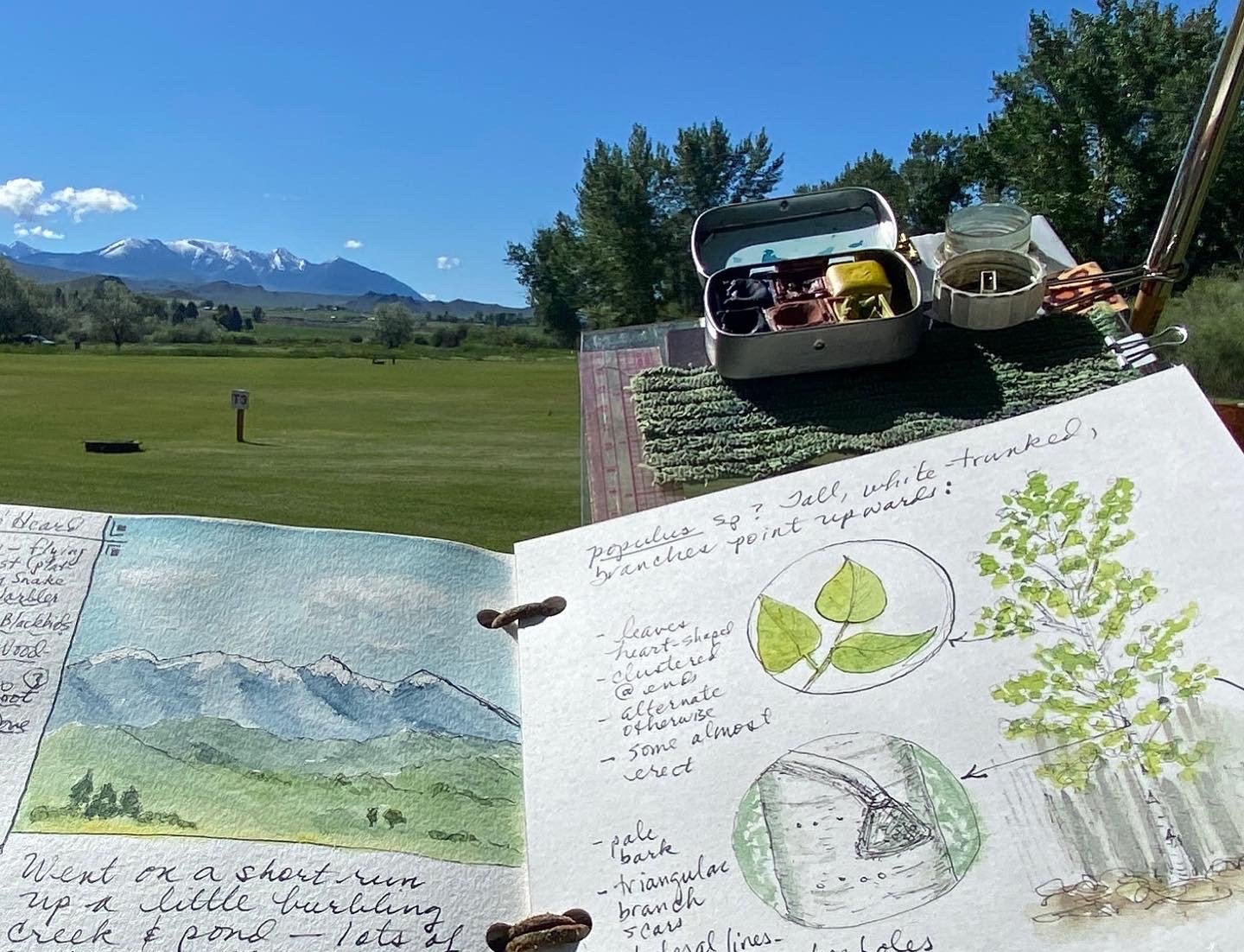How to Make Roseann's Leather Journal
This is my faithful companion for over 25 years, over five continents, exploring tens of thousands of miles.
The beauty is its simplicity: It's a one-piece unstructured cover cut from simple 4.5–5.5-ounce vegetable-tanned leather, which was finished with olive oil (and finished over many years with patina from hand-oil, dirt, spilled wine, water, mushroom spoors, blueberry juice . . .).
I incorporated the natural edge of the hide into the front cover. (I used un-dyed leather, as noted above finished with a coat of olive oil) but it will take a year or more for it to get the natural patina; here’s a source for Sedgwick English bridle leather in “London Tan” color, which is very close to the patina I developed naturally: https://www.buckleguy.com/sedgwick-english-bridle-leather-side-4-5-5-5oz-london-tan available in half-hides only so it’s pricey, but you can look around for similar weight leathers). I prefer the stiffer leathers so the book stays open and supports the pages while I’m standing up and journaling (see image below).
Using inexpensive leather shoelacing, I lace in 9x6-inch paper that is drilled with a standard hole punch pattern to fit widely available three-ring binders for archiving (see image at bottom). Paper can be anything—watercolor, usually 90-pound cold-press, or toned, or hand-made khadi or a combination; I also usually lace in plain copier paper at the back for scribbles and practice, and a set of reference printouts and an envelope to hold viewfinders, waxed paper, and small flat plastic bags for specimens in the front.
As you can see, after many years of use it gets a nice patina but holds up well. It has many stories to tell!
The new journal, circa late 1990s.
Download PDF With Dimensions
When the leather is wet, you can also score the cover with decorations—I added my initials.
Binding system.
Closer view of the simple overhand knots, which slide on the lacing and make the binding adjustable.
The closure laces can also be used to hold pencils or brushes.
To shape the journal: 1) Find a book about the size you want your journal to be (width, length, and thickness) and cover the book with plastic; 2) get the leather wet by dunking it in sink of clean water, and shape it to the book and let dry, weighted with more books (put a plastic barrier between the leather and books).
Showing the binding from the front inside.
Lacing undone for changing out paper. The video below shows how it’s done. A little tedious but easy enough.
Showing the scoring to help make the journal more square; see image to the left showing the journal next to a new one getting ready to score, wet, and shape.
Showing the Perspex Palette tucked in back of the journal to hold the Minimalist Paint Kit on a magnet strip, with a micro-fiber cloth clipped under it, and my travel brush slipped into the clip arms. If you don’t want to use a water reservoir, choose a Pental water brush.
Decades of journal pages archived in three-ring binders. Be sure to index your pages! See https://www.exploringoverland.com/constantapprentice/2021/2/9/indexing















